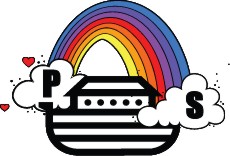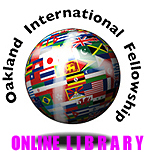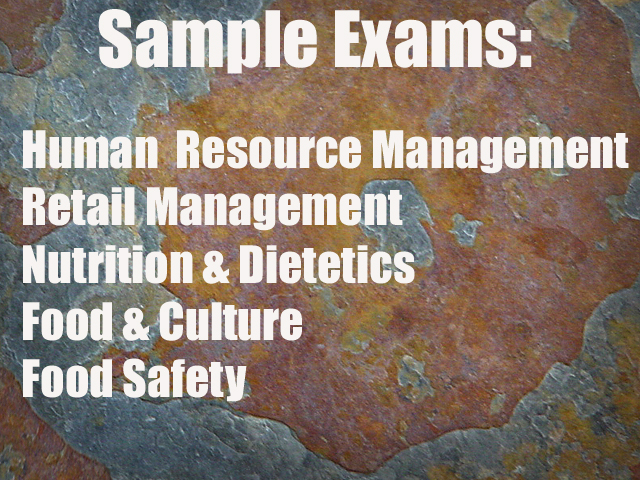Updated Sat, April 24, 2010 at 5:55 a.m. MARCH - APRIL 2010 Edition


| Home |Expressions
|Impressions
|Hotpressions |News|
Greek Life |Education
|Entertainment
|Multimedia |Sports |
Food
|CulturalLife
|Features|
Archives
|
Top 5 EDUCATION 
Custom Search
|
|
“Computer
Forensics & Cybercrime Sample Study Guide!”
Ramesh C. Reddy Editors Note: After praying to the Lord Jesus, I put together my own 25 multiple choice questions to help you assess what slides you need to focus your study on based on how many you get right. Also, the best way to study is to ask yourself what would have made the other answers correct. If you cannot answer that, you should go back and study the slides again. Studying this way is one study method. I do not know if the real final exam will be easier than this or harder. The real final could have questions from chapters 1-6 but I decided to focus on the chapters since the midterm 7-13. Hope you find this helpful to study. This only addresses the multiple choice part and not the essay questions. Chapter 7, Slide 2 1. 1 . A traditional challenge to prosecute computer crime is A. Lack of resources available to small agencies B. Overburdened state and federal agencies and reliance of small agencies on state and federal agencies. C. Snail pace of legislation D. Traditional apathy towards non-violent crime E. All of the above
Chapter 8, Slide 4 2. 2. This act was designed to regulate the previously untamed frontier of cyberspace. Using this act, prosecutors charged Andrew because he used obscene communication to a minor and transmitted child pornography. He was also charged with harassment, stalking, annoyance and abuse due to the fact of using electronic medium. A. Protection of Children Against Sexual Exploitation (1977) B. Child Protection Act C. Telecommunications Reform Act of 1996 D. Communications Decency Act E. Both c & d
Chapter 9, Slide 5 3. This case led to the judicial creation of the exclusionary rule, fruits of the poisonous tree, and was designed to prevent unlawful actions against citizens by the police. A. Olmstead v. U.S. (1928) B. Katz v. United States C. Weeks v. United States D. O’Connor v. Ortega
Chapter 10, Slide 4 4. Brianna is a cybercrimes division investigator and always teaches her employees to A. Always work from an image, leaving original intact. B. Always work from the original, leaving duplicate intact. C. Document, Document, Document D. Maintain the chain of custody E. Both a, c, & d
Chapter 11, Slide 3 5. This was a notable computer forensics case where the killer was caught because of his web browser history and downloading of a map. A. Scott Peterson B. Robert Morris C. Dennis Rader D. David Fuller E. Kevin Mitnick
Chapter 12, Slide 4 6. All of the following are ways to get evidence using artifacts of the windows system except A. Temporary Files B. Swap Files C. Metadata D. Event log or log files E. Printer spool
Chapter 13, Slide 6 7. Additional approaches to internet crime is A. Accountability of ISP’s & Hosts B. Accountability of E-businesses C. Utilization of existing forfeiture statuses D. Know your customers E. All of the above
Chapter 13, Slide 8 8. This is a problem with data mining and law enforcement A. Criticized by privacy advocates B. Criticized for mission creep C. Limited by lack of quality control – and no differentiation between good and bad data source. D. Lacks context (i.e. reveals patterns but not casual relationships or depth and strength of connection) E. All of the above
Chapter 12, Slide 9 9. Evidence from internet activity can be gathered by tracing IP addresses or domain names using A. Nslookup B. Traceroute C. FTK D. Whois E. Both a, b, & d Chapter 11, Slide 7 10. For probable cause to be established this element must be present A. Probable cause that a crime has been committed. B. Probable cause that evidence of a crime exists C. Probable cause that extant evidence resides in a particular location D. None of the above E. All of the above Chapter 10, Slide 11 11. In NIST standards for image and verification tools, all of the following are true except A. Tool must not alter the original disk B. Tool must not be able to access both IDE & SCSI disks C. Tool must be able to verify the integrity of a disk image file D. Tool must log I/O errors E. Tool must provide substantial documentation Chapter 9, Slide 10 12. Cathy, a systems administrator scanned a network to identify non-work related activity and during the process, an employee was discovered with over 1,000 porn images on employees’ computer and indicted. The indictment stood because of this case ruling. A. O’Connor v. Ortega B. U.S. v. Monroe C. U.S. v. Simons D. Weeks v. United States E. Katz v. United States
Chapter 8, Slide 10 13. This ruling makes it difficult to prosecute child porn – due to it’s requirement of proof of identity (i.e. must prove that the images are real and not computer generated. It creates a virtual pornography defense.
Chapter 7, Slide 9
14.
Ashley is planning to open a volunteer organization as a caretaker
for troubled children but before Ashley can open her volunteer
organization, her volunteer organization is subject to a criminal
history/background check of its members. This is because of the
Chapter 9, Slide 3
15.
Brianna was shocked that the U.S government intercepted her phone
calls that she made when she was young. To her dismay she found out
that the government had the right to do that because of this ruling.
This case ruling stated that the sanctity afforded to a private home
did not include telephone communications made within that home
because the 4th Amendment protects places and not people.
Chapter 7, Slide 3 16. Dennis is accused of selling pirated software and committing credit card fraud. The prosecutors can charge Dennis under this U.S. Code:
Chapter 8, Slide 3 17. All of the following occurred in the FCC v. Pacifica ruling except
Chapter 9, Slide 6 18. Expectation of privacy is articulated in the constitution and therefore cannot be considered a judicial creation.
Chapter 10, Slide 6 19. A round magnetic plate that constitutes part of the hard disk is called a
Chapter 11, Slide 8 20. A no-knock warrant is issued based on
Chapter 12, Slide 3 21. In small or poorly funded agencies – used media should be forensically wiped with a program meeting FBI standards.
Chapter 13, Slide 3 22. Legislation must balance legitimate interest in confidentiality against blanket anonymity.
Chapter 9, Slide 16 23. Expanded 1968 wiretap act to include electronic BB’s – especially “work product” and “documentary materials”
Chapter 10, Slide 16 24. Popular forensics packages such as EnCase Forensic and Ultimate Toolkit are put out by companies such as Guidance Software and Access Data.
Chapter 11, Slide 18 25. Steps in a traditional investigation cannot be used with those unique to computer-related investigations.
|
|
Copyright 2010 Pittsburgh Standard
Reproduction or reuse for profit prohibited without written consent from
Pittsburgh Standard

